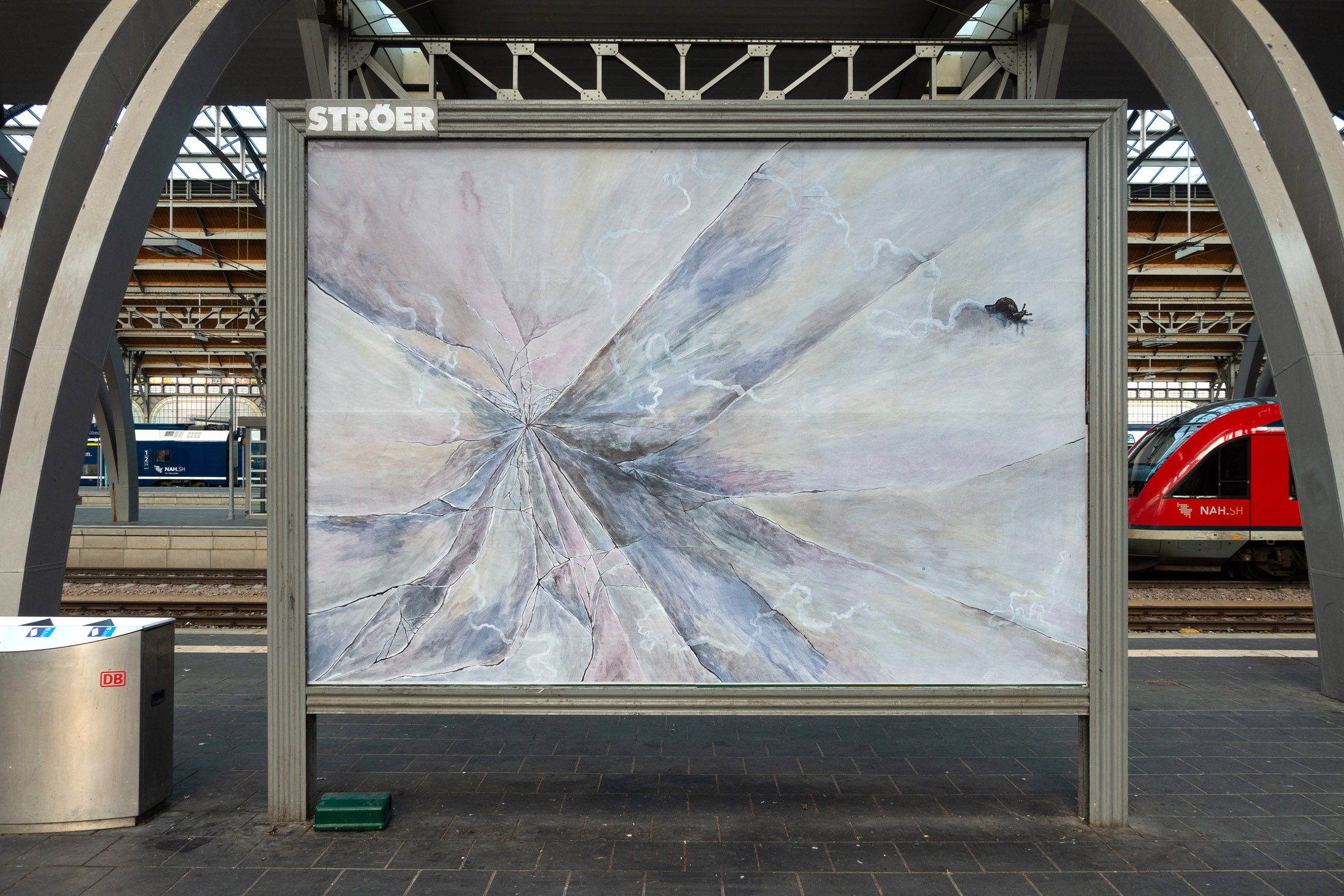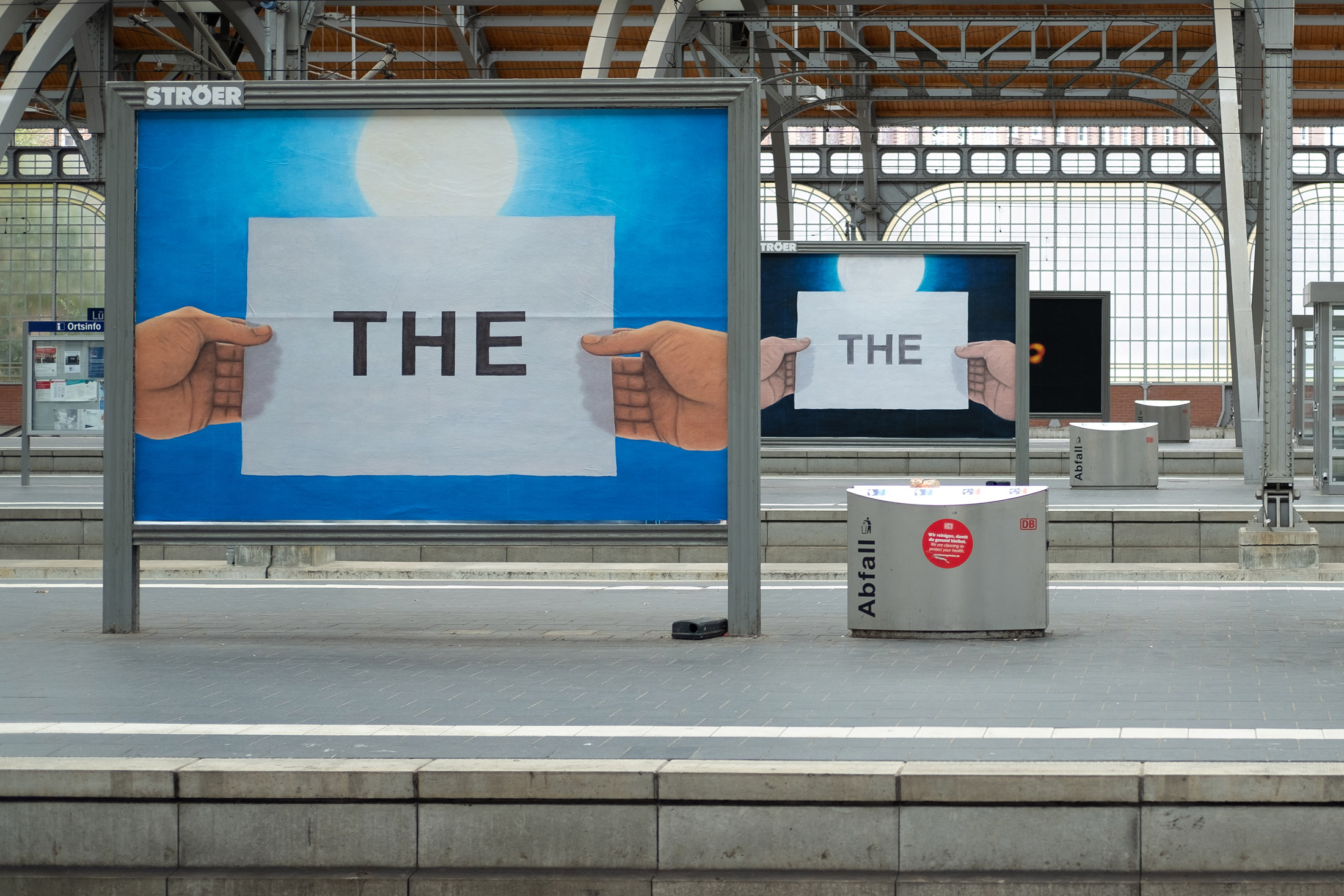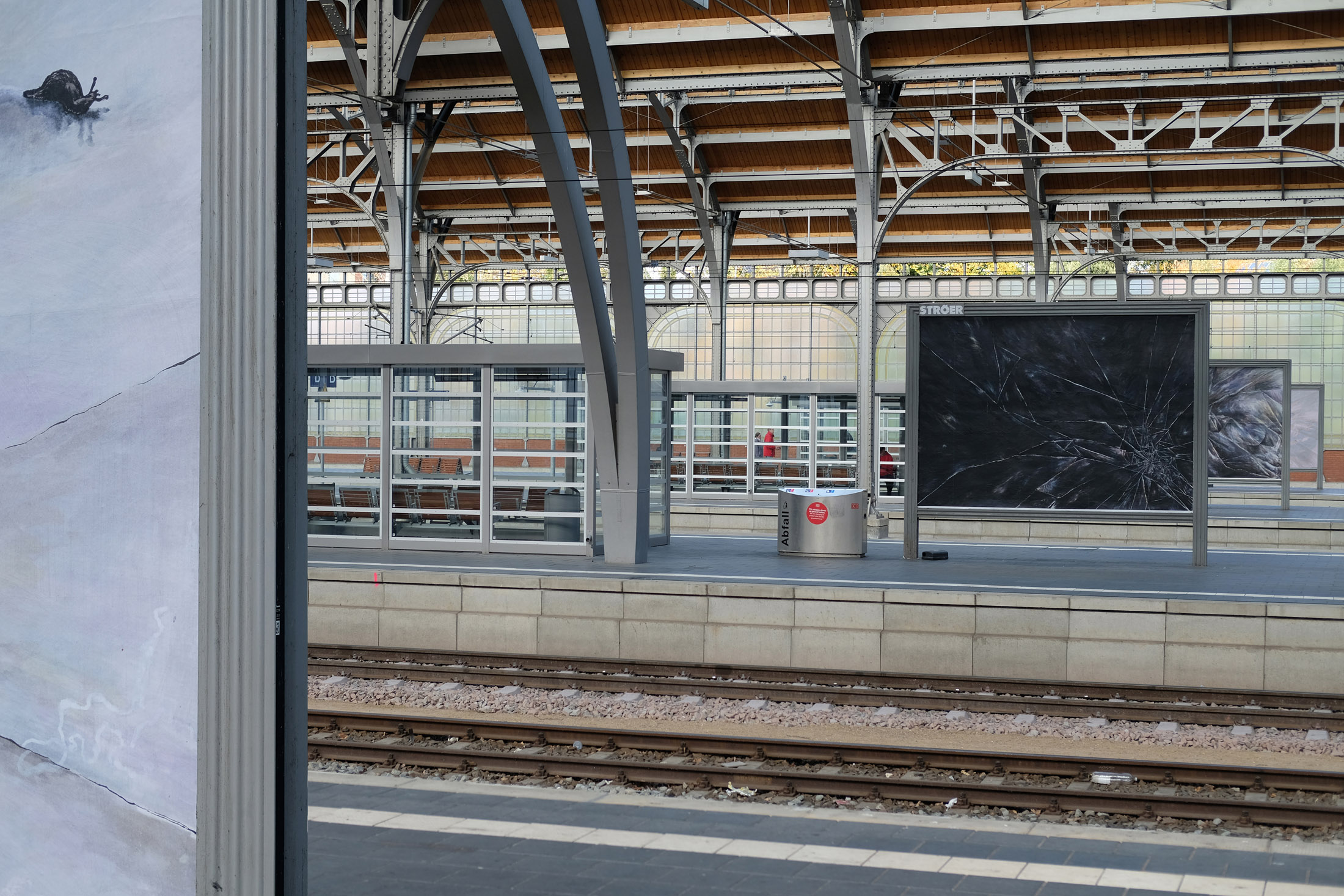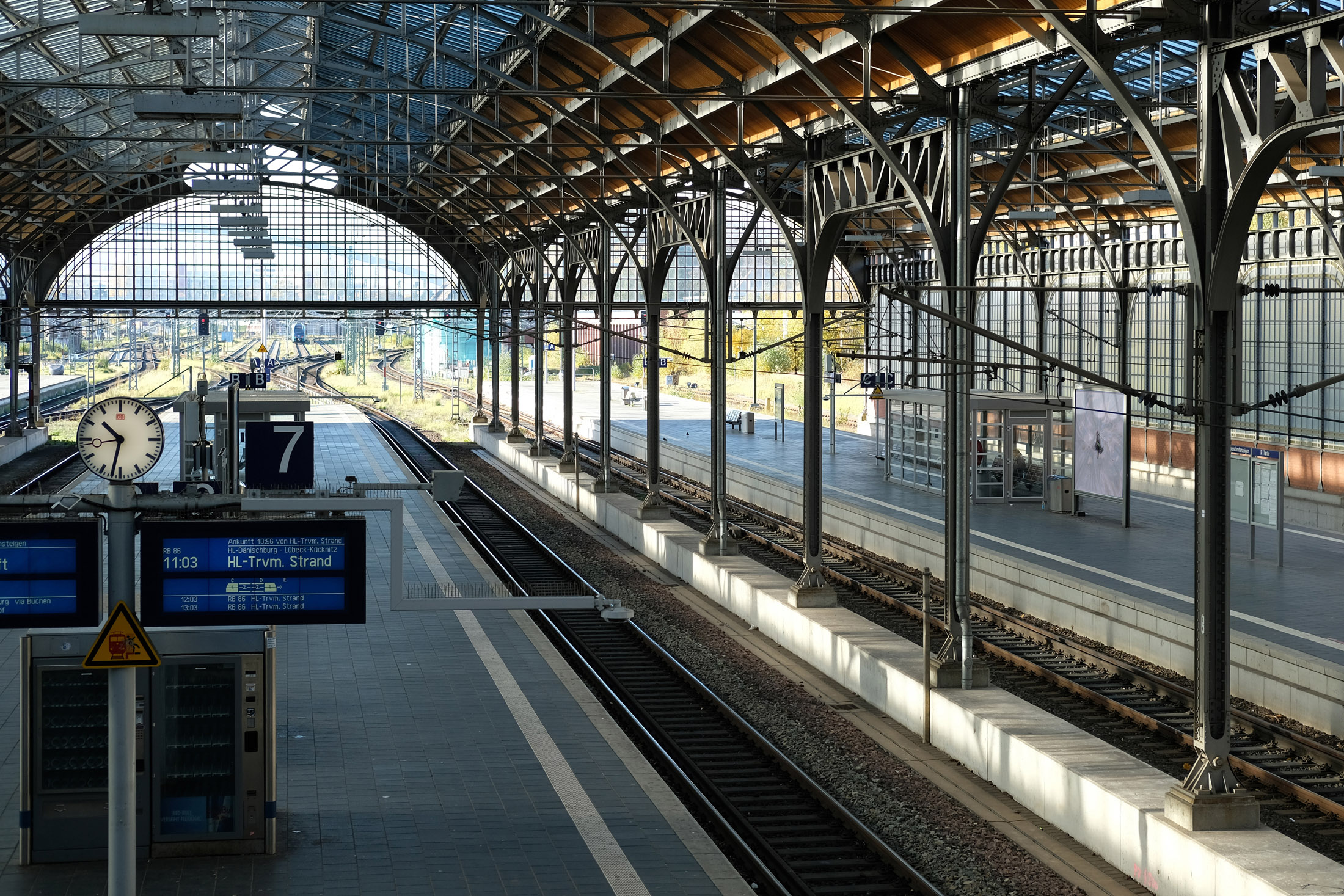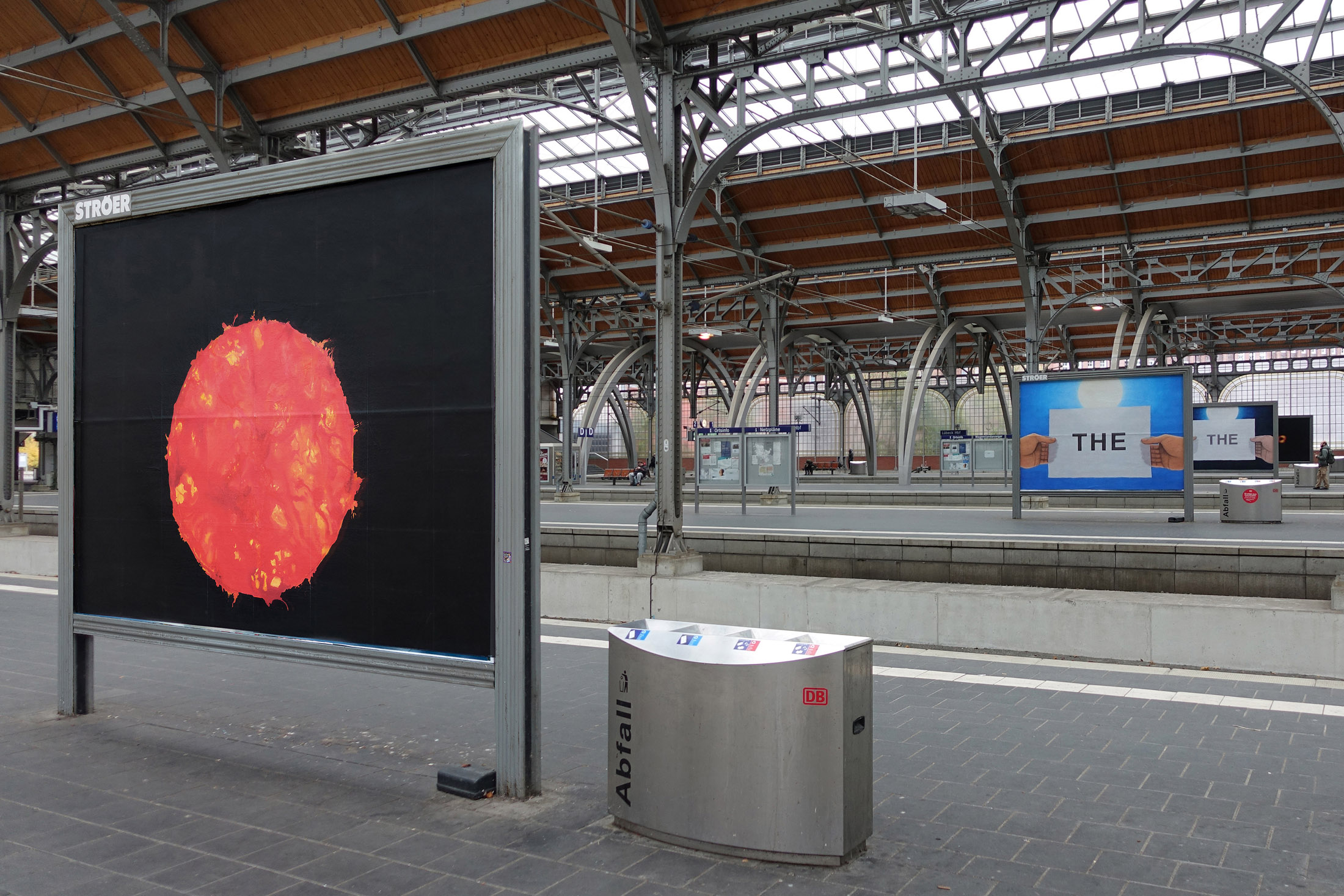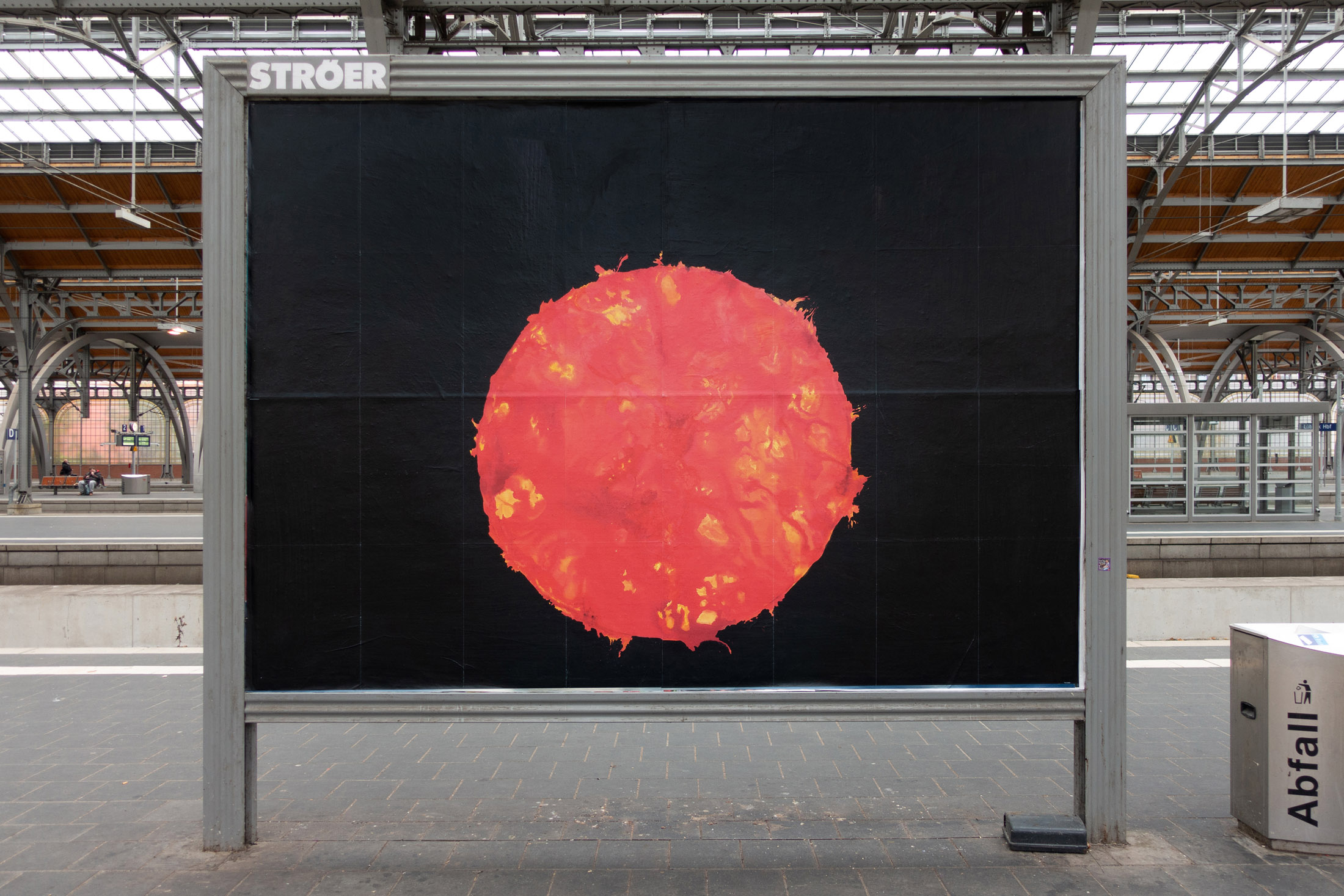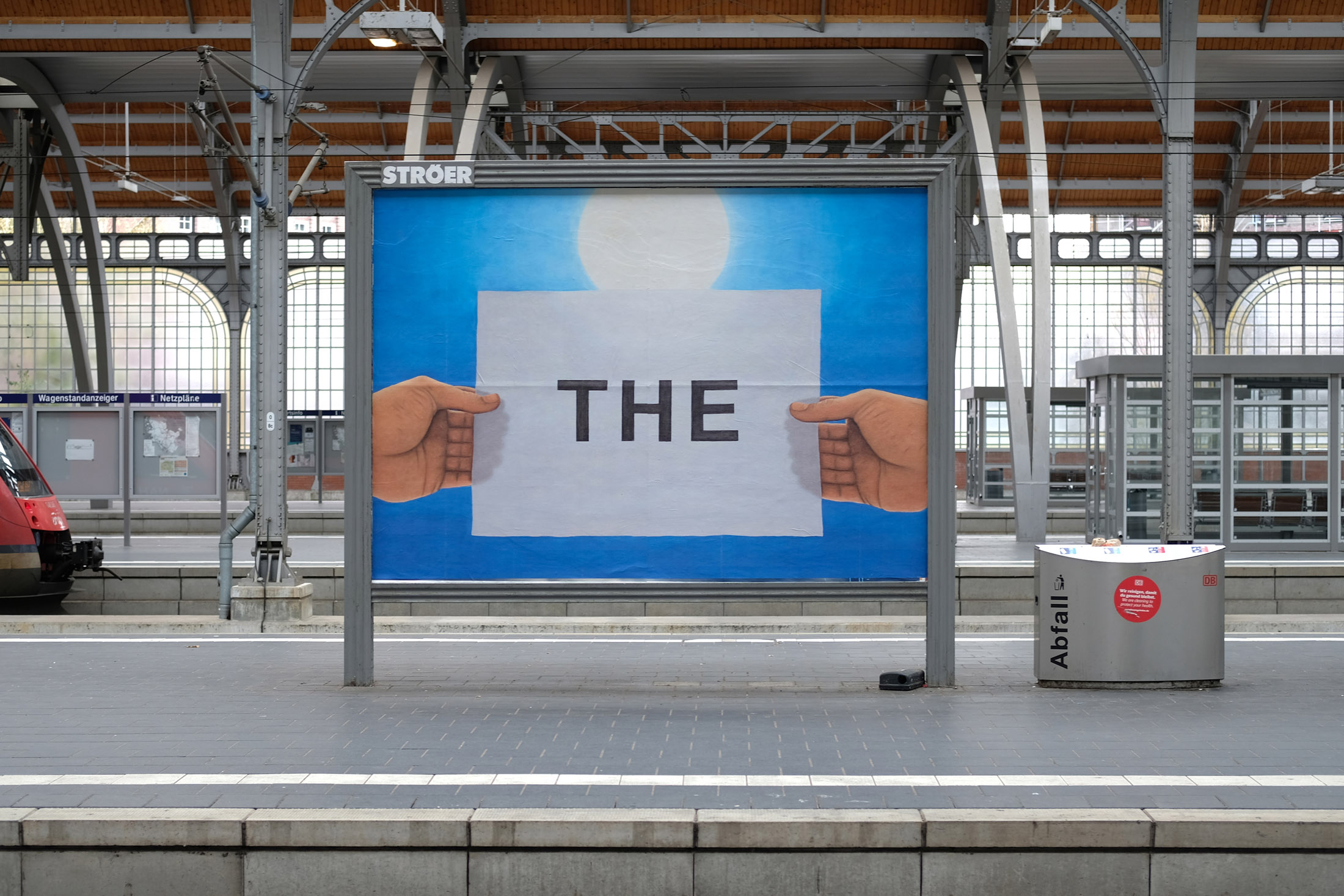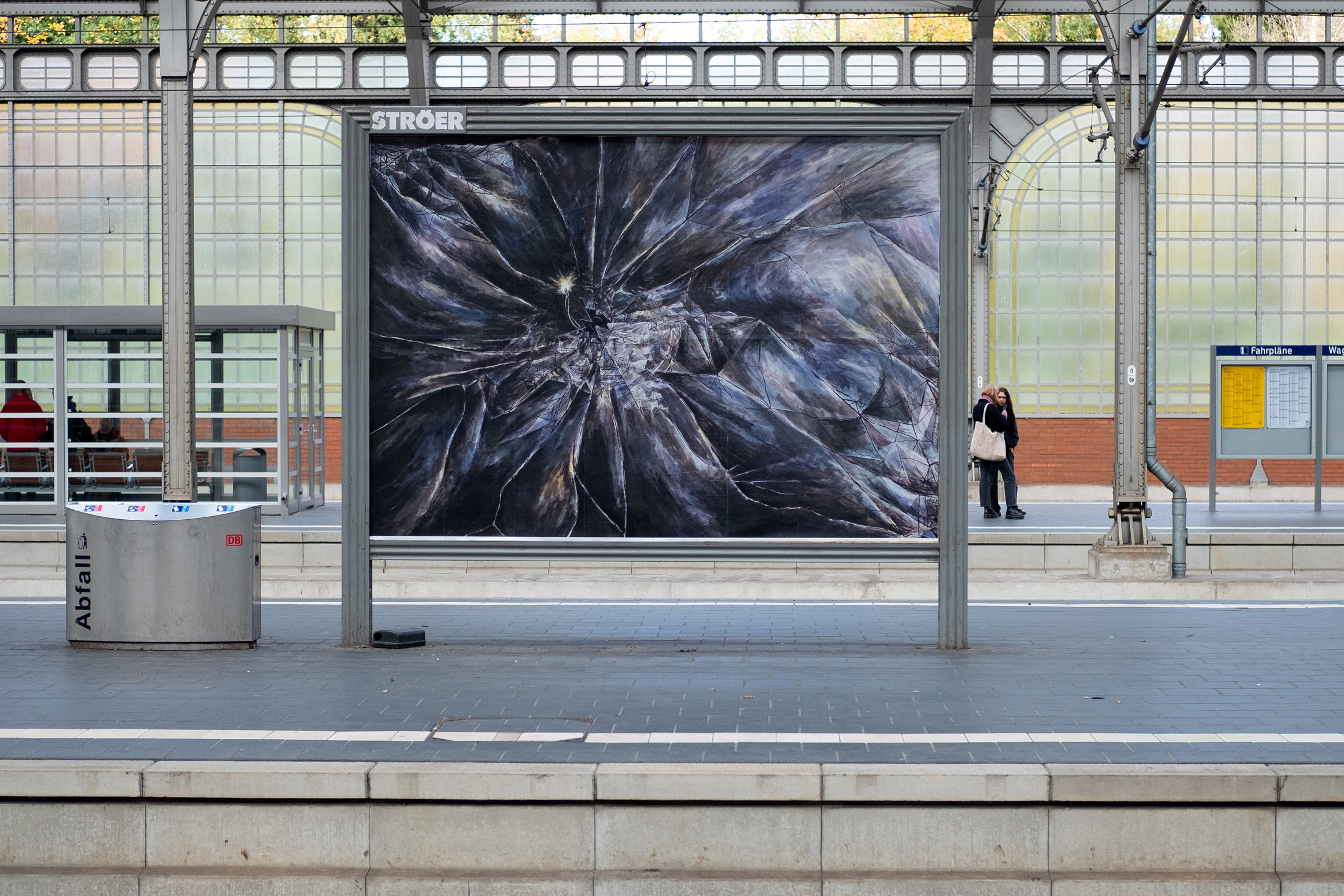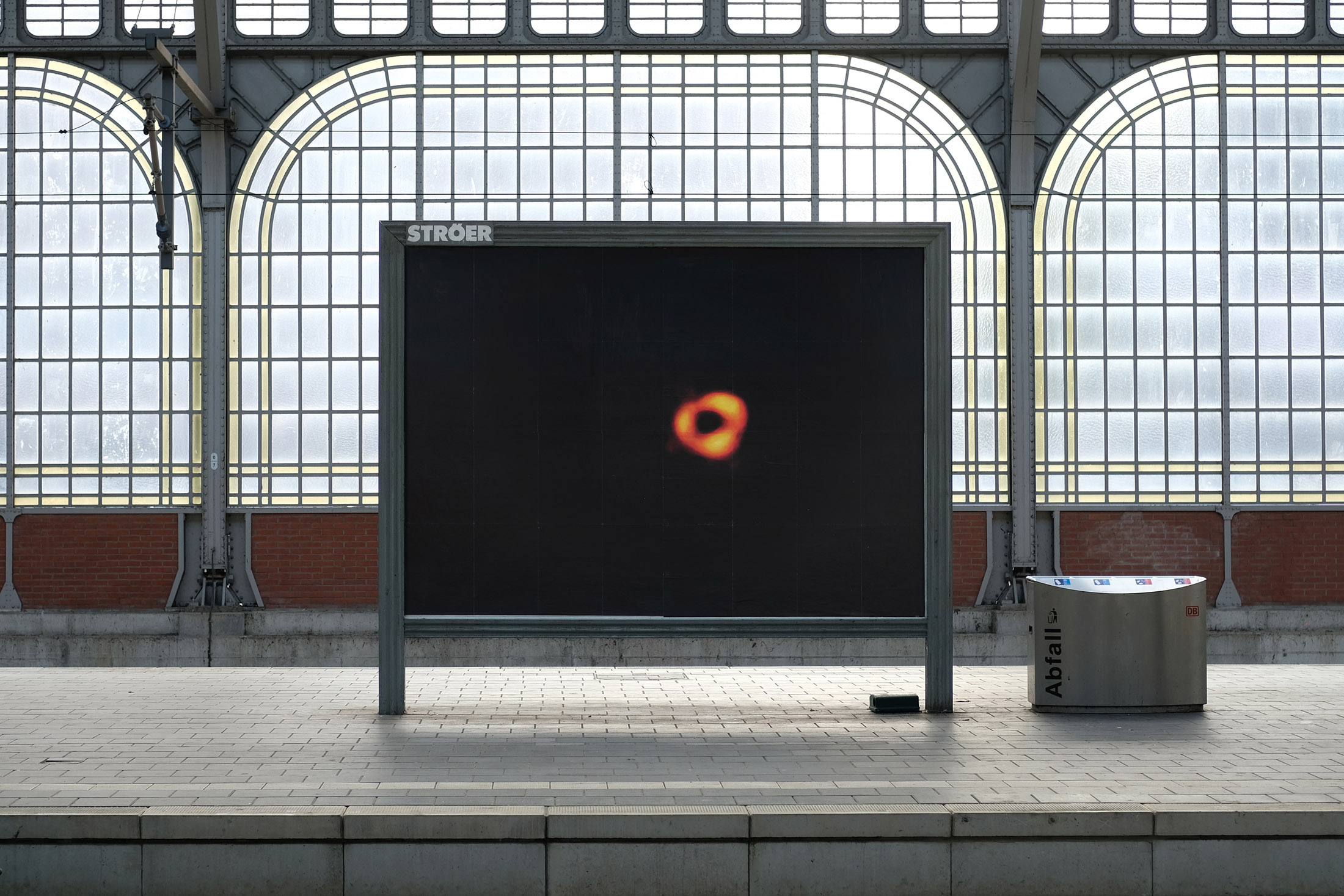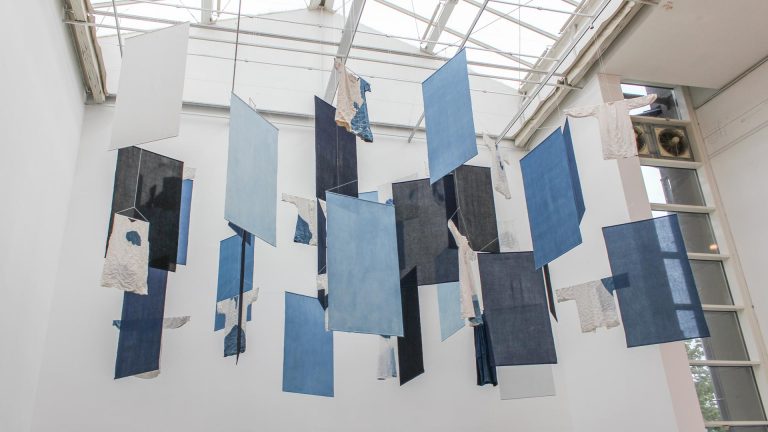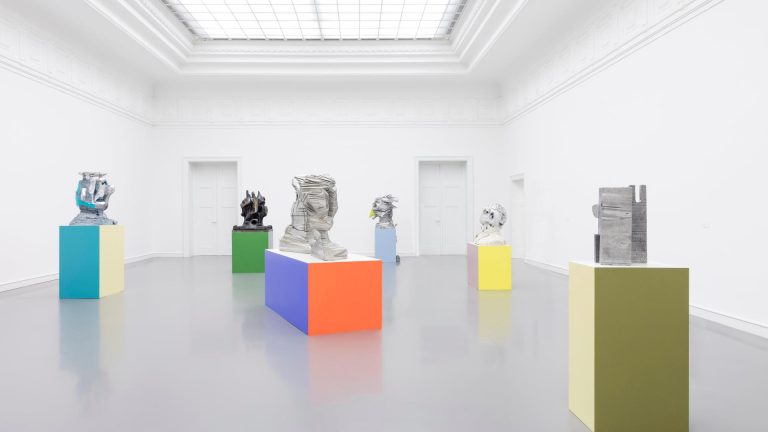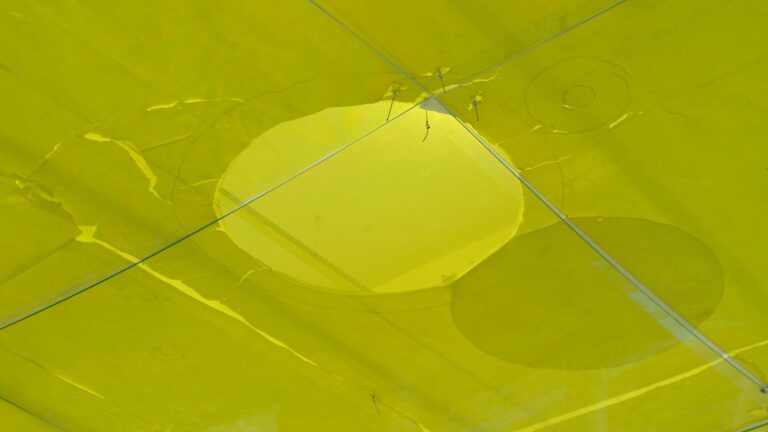Artists: Anton Engel and Christian Rothmaler
Exhibition title: The Most Important Thing
Venue: Lübeck Central Station, Lübeck, Germany
Date: November 3 – November 13, 2023
Photography: Roman Lartrich / All images copyright and courtesy of the artists
We only have a future as symbionts
Like most train stations, Lübeck Central Station, with its four-aisle platform hall, silver steel arches and wide wooden stairs, is a place of relative extremes. Arrivals, farewells, anonymity, tedious waiting and heated races for time change alternately. A cold wind sweeps across the platform and catches in vague memories of the summer sultriness under the glass roof. On four large doublesided billboards, located on the four platforms of the station, the artists Anton Engel and Christian Rothmaler are each showing four works. Looking north, one sees reproductions of Anton Engel’s drawings enlarged to the size of the billboard; looking south, one sees Christian Rothmaler’s paintings, also enlarged to the size of the billboard.
The drawings show broken glass, a cracked display, a network of fissures, a broken landscape. They may have been triggered by outside influences, weather conditions, a tiny explosive device, or a woodpecker pecking at the smooth surface. Anton Engel draws four fragile surfaces in different light. One state seems frozen in the moment of doom, the other whitnessing a lengthy process – a snail leisurely crosses the action, leaving its slimy trail behind. On the reverse sides of the posterboards, the dimensions and lines of sight lead to a bigger context. Christian Rothmaler paints a glowing sun, seven-fingered hands holding a bright sheet with the inscription THE, once towards the sun, once towards the moon and a black hole – referring to the images of a black hole in the center of the Milky Way, as it could be imaged for the first time in 2022 by means of many radio telescopes coupled worldwide.
It becomes day and it becomes night in the images with their different light situations – like on the platforms that surround them. The works are in close dialogue with each other spanned between utopia and dystopia, between destruction and new beginnings, the microcosm and the universe, between cool glass and burning stars, between states of exhaustion and energy economy.
The science theorist and feminist author Donna Haraway is concerned with the question of how life will be possible in the future on a damaged planet Earth. For this she establishes the concept of Chthuluzän, the age of continuous learning. We will not survive as individuals, but only in co-becoming with other species, as symbionts, Haraway writes. We become – with each other or not at all. The matter is serious: we are in the process of destroying the planet through overexploitation, overproduction and overpopulation. In this situation, she argues, neither technological optimism nor cynical doomsday sentiment is the appropriate attitude. Instead, we must remain restless and step out of the old patriarchal narrative, in which the lone hero defeats the enemies, and get together with the animals in closest companionship. (Donna J. Haraway: Staying with the Trouble: Making Kin in the Chthulucene, 2016).
What is hiding behind the fragmented panes, and what stands behind the all-encompassing THE, which in English defies gender classification? Is it referring to the much-coveted moon, The Moon as a speculative new habitat, or to The End, or merely to a gap of speechlessness? Could the seven fingers be the visualization of a symbiosis as Haraway understands it? What keeps the system together at its core, now and in the future? The woodpecker breaks with the slick rules of non-commitment, while the snail is tempted to patch them up in a new, more permeable form with its slime.
– Lisa Klosterkötter

